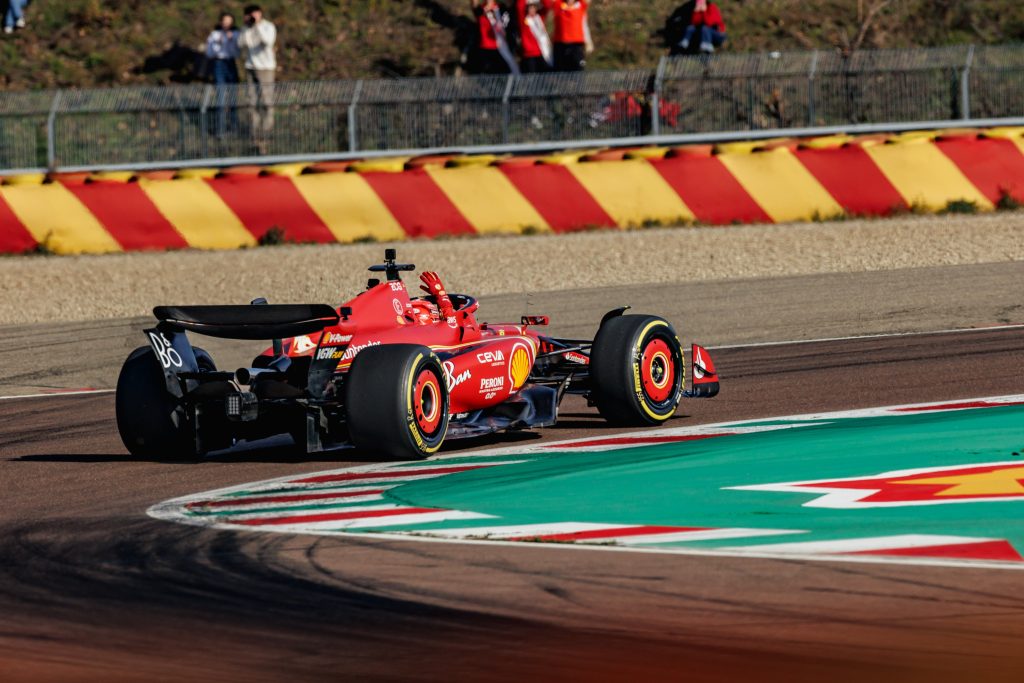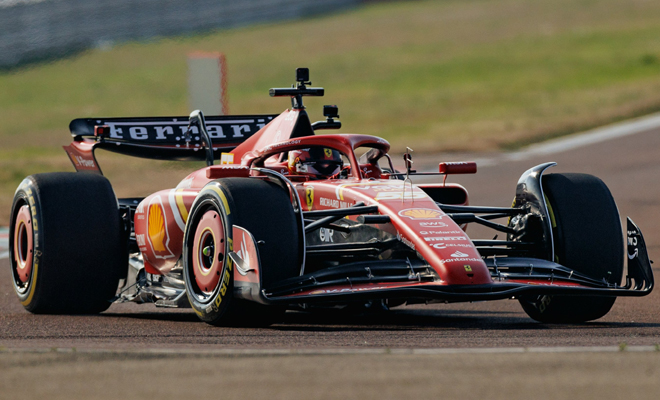Amidst the shift to ground effect regulations in Formula 1, Ferrari faces strategic hurdles against Red Bull’s mastery, questioning its competitive edge.
Since the introduction of ground effect regulations in Formula 1, Ferrari has found itself in a complex situation, regularly outpaced by Red Bull, which has perfectly understood and exploited the aerodynamic demands of this new era. Red Bull’s dominance, coupled with some strategic and technical errors from Ferrari, as well as the presence of Max Verstappen, an exceptional driver within the rival team, has made the task particularly challenging for the Scuderia. Despite these challenges, Ferrari has remained competitive, although the ultimate victory has eluded them. The commitment of Lewis Hamilton for the coming seasons signals a dynamic shift and questions the ability of its current drivers, Charles Leclerc and Carlos Sainz, to achieve the desired results.
The 2023 season saw Ferrari close the year on a relatively positive note, despite a single victory. This performance underscores that, regardless of driver talent, the team must have a vehicle capable of competing with the championship leaders. The technical analysis of the Ferrari 2024 highlights conservative design choices, notably in the front wing and suspension, which could limit its potential for improvement compared to its competitors.
A detailed examination of the Ferrari 2024 reveals few significant changes in the crucial area of the front wing, raising concerns about the optimization of the air flow structure necessary to maximize the car’s aerodynamic performance. The modifications appear marginal and may not contribute positively to the overall efficiency of the car. The design of the front wing, crucial for establishing good air flow around the car, seems to be a missed opportunity for Ferrari.
Ferrari Adopts Cautious Evolution, Seeks Balance

Regarding the front suspension, Ferrari continues with a pushrod system, without major innovations from the previous year. This continuity could indicate a certain caution in the design approach or a lack of perceived opportunities for significant gains in this area. Suspension systems have a direct impact on aerodynamics and car behavior management, and the lack of radical changes here could limit Ferrari’s ability to optimize these crucial aspects.
For the sidepods and rear of the car, Ferrari seems to have adopted a slightly different approach, incorporating elements inspired by Red Bull for the radiator inlets. However, the design does not appear as radical as that of its rivals, which could reflect a more conservative development strategy or specific technical constraints. The management of cooling and air flow in these areas is vital for overall performance, and Ferrari appears to be seeking a balance between cooling efficiency and aerodynamic optimization.
An interesting point concerns the introduction of a small duct on the side of the cockpit, which could be an evolution of what was known as the ‘S’ duct. This innovation could offer an advantage in terms of managing the air flow around the driver’s helmet, although its actual impact remains to be assessed under race conditions.
Ferrari 2024: Evolution, Caution, and Performance

On the rear suspension front, Ferrari continues with a pullrod system but with modifications in the component layout that might aim to improve weight distribution or optimize the internal aerodynamic structure. These changes, though subtle, demonstrate a constant pursuit of performance enhancement.
In conclusion, the Ferrari 2024 appears to be the result of a balanced approach, mixing caution with evolution rather than revolution. Despite some promising developments, the absence of significant innovations could limit its ability to challenge Red Bull’s dominance. Thus, Ferrari’s performance in 2024 will heavily depend on the integration and efficiency of unseen elements, such as internal aerodynamic solutions and the cooling system, as well as the team’s ability to optimize the overall package in an extremely competitive context.
The focus on aerodynamics, particularly around the rear wing and diffuser, seems aimed at reducing the floor’s sensitivity to air flow variations, a crucial point for stability and aerodynamic efficiency at high speeds. Ferrari has sought to improve its straight-line speed, an area where it lagged behind its rivals last season. Adjustments made to the rear wing and diffuser design could offer gains in terms of drag reduction and aerodynamic efficiency enhancement, essential for performance on circuits requiring high top speeds.
Ferrari 2024: Strategy, Synergy, and Hamilton

However, Ferrari’s success in 2024 will not only depend on optimizing these individual elements but also on the synergy between all aspects of the car’s design. The interaction between aerodynamics, suspension, and power unit performance will be decisive. Adding Lewis Hamilton to the team brings not only exceptional talent on the track but also valuable experience that could help refine the car’s development and tuning throughout the season.
The pressure is on for Ferrari to return to the forefront of Formula 1. Expectations from fans, the team, and drivers are high, and the 2024 season is seen as a crucial opportunity to demonstrate that Ferrari can meet the technical and strategic challenges posed by the current regulations and its competitors. The team dynamics, with Hamilton’s arrival and speculations surrounding the future of Leclerc and Sainz, will add an extra layer of complexity to the season’s management.
Ultimately, the technical analysis of the Ferrari 2024 underscores a measured approach, with targeted evolutions rather than radical changes. While some may view this as a lack of ambition, it could also reflect a deliberate strategy aimed at consolidating existing strengths while cautiously exploring new avenues for improvement. The key to success will lie in Ferrari’s ability to fully exploit the potential of its 2024 car, adapting and adjusting its strategy to the constantly evolving dynamics of the Formula 1 championship.
Ferrari F1 Ground Effect. 2024 Ferrari F1 Ground Effect. SF-24 Ferrari F1 Ground Effect
- ReadMore>Vasseur Navigates Sainz Exit, Welcomes Hamilton Era
- Following us on Facebook and Twitter.
- Albon & Sainz Make Top 10 as Williams Impresses
- Leclerc Closes Gap, McLaren Still Leads in Jeddah
- Hadjar Struggles with Balance, Lawson Eyes Q3 in Jeddah
- Bearman Struggles in Saudi GP Practice, More Work Ahead
- McLaren’s Strong Start: Norris Leads, Piastri Close
